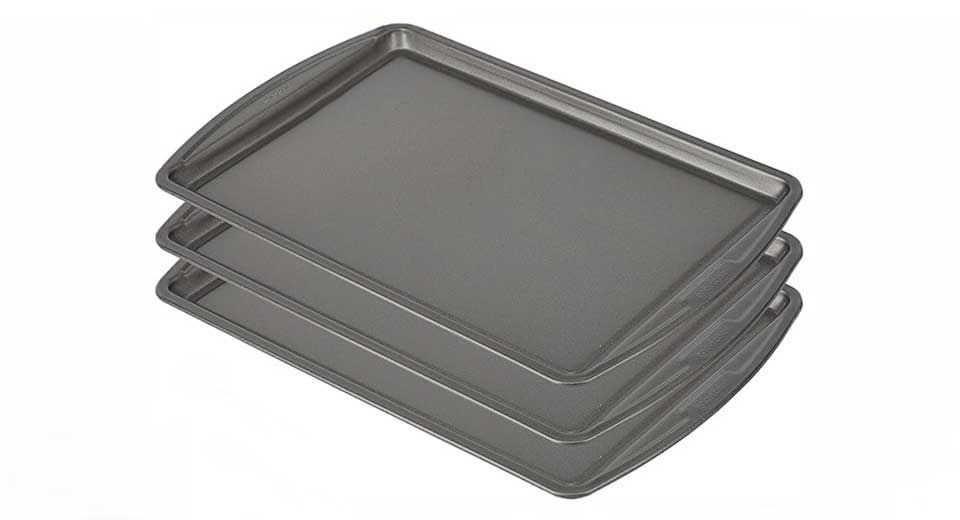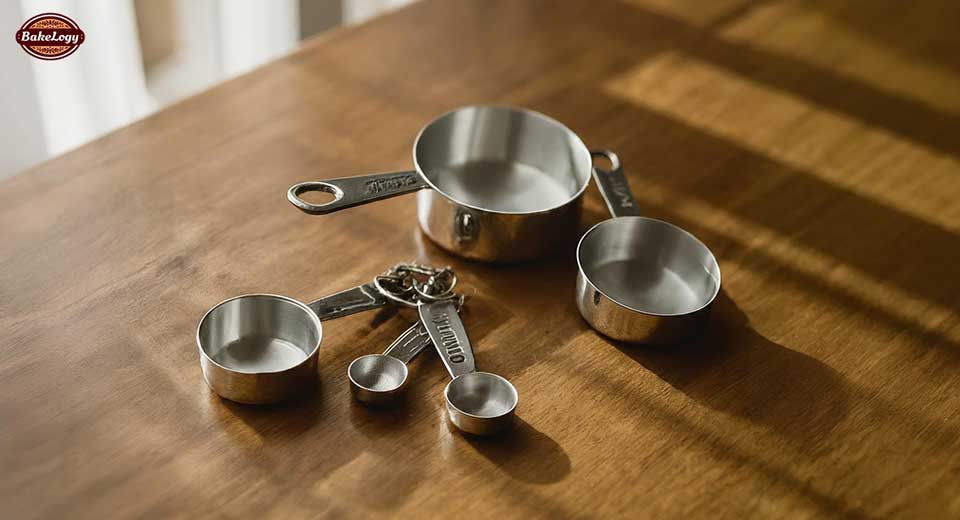Baking Sheets Every Baker Needs in Their Kitchen
Explore the top 5 baking sheets every baker needs in their kitchen. Upgrade your baking tools with these essential baking sheets for perfect results every time!
Introduction to Baking Sheets
As an essential kitchen tool, baking sheets are indispensable for both amateur and professional bakers. They provide the flat surface you need to bake cookies, roast vegetables, or cook meats. Understanding the different types can elevate your baking game.
Types of Baking Sheets
- Aluminum Baking Sheets
- Lightweight
- Excellent heat distribution
- Rust-resistant
- Non-Stick Baking Sheets
- Easy to clean
- Ideal for cookies and pastries
- Requires careful maintenance
- Stainless Steel Baking Sheets
- Durable
- Even heat conduction
- Versatile
Factors to Consider
- Size: Choose a size that fits your oven and suits your baking needs.
- Thickness: Thicker sheets provide better heat distribution.
- Coatings: Non-stick vs. natural finish, depending on your preference.
Why Quality Baking Sheets Matter
Choosing the right baking sheet can significantly impact your baking results. Quality baking sheets ensure even heat distribution, which is crucial for baking consistency. Here’s why you should invest in good ones:
- Durability: High-quality sheets resist warping under high temperatures.
- Non-Stick Surface: Easier to clean and helps maintain the integrity of your baked goods.
- Heat Conductivity: Promotes uniform baking, preventing burnt or undercooked sections.
- Versatility: Suitable for various baking techniques and recipes.
- Material: Opt for stainless steel or aluminum for the best performance.
Investing in top-tier baking sheets enhances your baking experience and results.
Essential Features in Baking Sheets
Material
Choose between aluminum, stainless steel, and non-stick coatings. Aluminum offers excellent heat conduction, while stainless steel provides durability.
Size
Opt for a standard half-sheet size of 18×13 inches for versatility. Ensure it fits in your oven.
Rimmed Edges
Ensure your baking sheet has rimmed edges to contain spills and prevent warping.
Thickness
A thicker gauge resists warping and ensures even heat distribution. Look for 18-gauge or lower.
Non-Stick Surface
A non-stick coating simplifies cleanup. However, ensure it’s PFOA-free.
Easy to Clean
Consider dishwasher-safe options or those with a smooth surface to minimize scrubbing.
Top 5 Baking Sheets for Every Baker
Choosing the right baking sheet ensures perfect baking results. Here are five highly recommended baking sheets for your kitchen:
- Nordic Ware Natural Aluminum Commercial Baker’s Half Sheet
- Made from pure aluminum for even baking.
- Rust-resistant and durable.
- USA Pan Bakeware Half Sheet Pan
- Utilizes aluminized steel for superior heat conductivity.
- Features a non-stick silicone coating.
- Vollrath Wear-Ever Cookie Sheet Pan
- Heavy-duty aluminum construction.
- Defined edges prevent warping.
- Calphalon Nonstick Bakeware
- Heavy gauge steel core for even heating.
- Non-stick surface allows for quick release.
- Wilton Perfect Results Premium Non-Stick Bakeware
- Durable non-stick coating.
- Affordable and reliable for everyday baking.
Each baking sheet offers unique benefits, ensuring you have the perfect tool for various recipes and baking techniques.
Comparison of Baking Sheet Material Types
Understanding various baking sheet materials helps you choose the best option.
Aluminum
- Pros: Excellent heat conductivity, lightweight, and affordable.
- Cons: Prone to warping and scratching; can react with acidic foods.
Stainless Steel
- Pros: Durable, non-reactive to food, and resistant to rust and staining.
- Cons: Poor heat conductivity and may cause uneven baking.
Non-Stick
- Pros: Easy to clean, reduces the need for parchment paper.
- Cons: Coating can chip or wear off; typically less durable.
Ceramic
- Pros: Eco-friendly, non-toxic, and heats evenly.
- Cons: Can be heavy and prone to chipping and cracking.
Insulated
- Pros: Prevents over-browning, ideal for delicate baking.
- Cons: Slower baking times and typically pricier.
How to Care for Your Baking Sheets
To prolong the life and performance of your baking sheets, you should follow these essential care tips.
- Hand Washing: Always wash your baking sheets by hand using warm, soapy water. Avoid abrasive cleaning pads to prevent scratching.
- Avoid High Heat: Prolonged exposure to high temperatures can warp baking sheets. Stick to recommended baking temperatures.
- Use Parchment Paper: Lining your baking sheets with parchment paper or a silicone mat helps prevent food sticking and reduces cleaning hassle.
- Dry Completely: Ensure your baking sheets are thoroughly dried after washing to prevent rust, especially for non-stick and metal types.
- Storage: Store baking sheets in a dry place, stacked horizontally to avoid warping.
Proper maintenance ensures your baking sheets last longer and perform better.
Conclusion and Final Recommendations
Choosing the right baking sheets is crucial for any baker. Here’s what to look for when you make your decision:
- Material Matters: Opt for aluminum or aluminized steel for durability and even heating.
- Non-Stick vs. Natural: Consider a non-stick coating for easy release, but be mindful of potential wear over time.
- Size and Capacity: Ensure the baking sheets fit your oven and meet your baking volume needs.
- Maintenance: Look for options that are dishwasher safe for convenience.
- Versatility: Choose baking sheets that can handle a variety of recipes.
By focusing on these aspects, you’ll make a better-informed choice and improve your baking experiences.
FAQ for Baking Sheets
Q1: What are baking sheets?
A: Baking sheets are flat, rectangular metal pans used in ovens for baking goods such as cookies, bread, and pastries.
Q2: Why do quality baking sheets matter?
A: Quality baking sheets ensure even heat distribution, durability, and better baking results, helping you achieve consistent, delicious bakes.
Q3: What are the essential features in baking sheets?
A: Essential features in baking sheets include a sturdy construction, non-stick surface, proper size, and material that ensures even heat distribution.
Q4: What are the top 5 baking sheets for every baker?
A: The top 5 baking sheets for every baker are Nordic Ware Natural Aluminum Commercial Baker’s Half Sheet, USA Pan Bakeware Half Sheet Pan, Vollrath Wear-Ever Half Size Sheet Pan, Calphalon Nonstick Bakeware Baking Sheet, and OXO Good Grips Non-Stick Pro Half Sheet.
Q5: How do baking sheet material types compare?
A: Aluminum sheets offer even heating and durability, stainless steel sheets are non-reactive and easy to clean, and non-stick sheets provide easy food release but need careful handling to avoid damage.
Q6: How do you care for your baking sheets?
A: To care for your baking sheets, clean them with gentle soap and water, avoid abrasive scrubbing, dry thoroughly, and store them properly to prevent warping.
Q7: What are the final recommendations for baking sheets?
A: Invest in a high-quality baking sheet that suits your baking needs, consider the material, and follow proper care instructions to prolong its lifespan and maintain baking performance.




